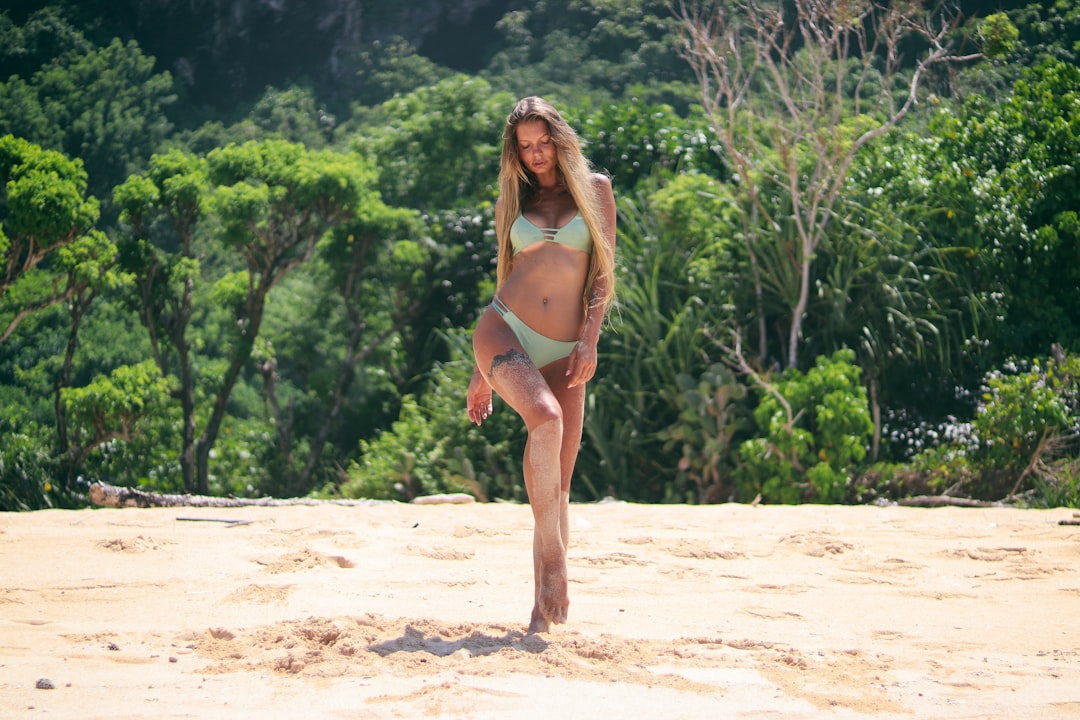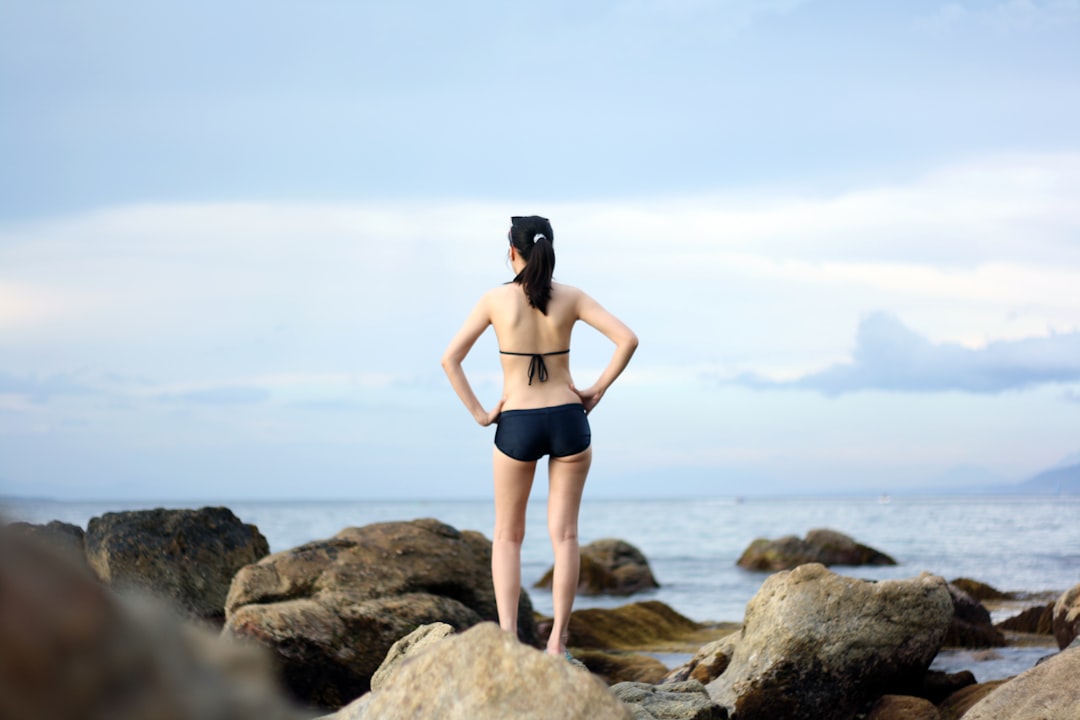
A woman's pubic area after a partial bikini wax
To ensure the best results after your Brazilian wax, make sure to keep the area clean and dry at all times. This will help prevent any potential infections and speed up the healing process. Avoid using harsh soaps or lotions that can irritate the sensitive skin in that area. Instead, opt for gentle cleansers and pat the skin dry gently with a soft towel.
4. How can I minimize discomfort during and after my Brazilian wax?
The benefits of Brazilian waxing for hair removal
It's important to book your Brazilian wax session with plenty of time before your desired date to allow for proper preparation and avoid any scheduling conflicts. Waiting until the last minute can lead to difficulty securing an appointment that fits into your schedule.
[ edit ]
Bikini waxing is the removal of pubic hair using a special wax that adheres to hairs and pulls them out when the wax is removed quickly from the skin, usually with a cloth strip. This practice can be done using hot or cold wax and is commonly associated with women, but male waxing has also become more common. The procedure can be performed at home or by a professional at a salon or spa. There are different styles of bikini waxing, including American, French, and Brazilian, each involving varying degrees of hair removal in the pubic region. The process may cause some discomfort and irritation, but with repeated removal over time, pubic hair becomes weaker and grows more slowly.
In effect this means that taking the time to read through reviews can help you make an informed decision and ensure a positive Brazilian wax experience.

The pubic area is one of the most sensitive areas in the body and during the procedure special attention must be paid to avoid irritation. [ citation needed ] Pain directly resulting
What is Bikini waxing
Overall, bikini waxing has evolved to reflect changing fashion trends and societal norms surrounding body hair grooming.
Overall, bikini waxing has evolved to reflect changing fashion trends and societal norms surrounding body hair grooming.
The pubic area is one of the most sensitive areas in the body and during the procedure special attention must be paid to avoid irritation. [ citation needed ] Pain directly resulting
Brazilian waxing does not necessarily cause more ingrown hairs as commonly believed. In fact, the opposite is true! When hair is removed from the root during a Brazilian wax, it actually helps to reduce the occurrence of ingrown hairs. This is because the hair grows back with a finer tip, making it less likely to get trapped under the skin and causing an ingrown hair. So, contrary to popular belief, Brazilian waxing can actually help prevent ingrown hairs rather than causing more of them!
4. How can I soothe my skin after completing a DIY Brazilian wax?
Pain and discomfort during waxing can be a common experience for many individuals, especially those who are new to the process. The sudden removal of hair from the root (ouch!) can cause some level of pain, which may vary depending on individual tolerance levels. Additionally, the skin in the bikini area is sensitive and delicate, so waxing can lead to redness, irritation (yikes!), and even minor cuts or bruising in some cases. It's important to note that these side effects are usually temporary and subside within a few hours or days with proper care. In effect this means that while pain and discomfort are potential risks of getting a Brazilian wax, they are often manageable with the right precautions taken before and after the treatment.
Pubic hair can be removed in a number of ways, such as waxing, shaving, sugaring, electrolysis, laser hair removal or with chemical depilatory creams. Waxing involves applying melted, usually hot, wax to the pubic hair that an individual would like to remove. The wax, which adheres to the hair as it hardens, is then covered with small strips of cloth.
4. Is it necessary to let hair grow out before getting a Brazilian wax?
Bikini waxing, the removal of pubic hair using special wax, has become a common practice for both women and men. It can be done at home with a DIY kit or by a professional at a salon or spa. The different styles of bikini waxing include American, French, and Brazilian waxing. American waxing removes hair that would not be covered by a swimsuit, while French waxing leaves a strip of hair above the vulva. Brazilian waxing removes all pubic hair from the pelvic region, labia, perineum, and anus.

If a person has never been waxed before, or has not been waxed for a long time, it may be necessary to trim the pubic hair using scissors or an electric razor prior to waxing. [ 4 ] [ 5 ] A patch test is recommended, usually on the upper thigh, to test for allergies or skin sensitivities to the ingredients in the wax. Sometimes a hair growth inhibitor is applied after waxing, which slows the regrowth of hair if applied daily for an extended period of time. [ 3 ]
A bikini line is the area of the upper leg and inner thigh in which pubic hair grows that is normally not covered by the bottom part of a swimsuit. [ 2 ] In some cultures, visible pubic hair in this region is disliked and/or considered embarrassing and so it is sometimes removed. [ 2 ] However, some people remove pubic hair that will not be exposed for aesthetics, personal grooming, hygiene, culture, religion, fashion and for sexual intercourse.
After getting a Brazilian wax, be sure to cleanse the area gently with a mild, fragrance-free cleanser. This will help prevent irritation and infection. Avoid using harsh soaps or exfoliants, as this can further irritate the skin and cause discomfort. Instead, opt for a gentle cleanser that is specifically formulated for sensitive skin. Be sure to rinse the area thoroughly with lukewarm water to remove any leftover wax residue. Pat the skin dry with a soft towel (avoid rubbing) to avoid further irritation and give your skin some time to breathe and recover from the waxing process!
A woman's pubic area after a partial bikini wax
Prepare the skin by using a gentle exfoliating scrub to remove dead skin cells and unclog pores. This will help the wax adhere better to the hair follicles, making the process more effective and less painful. Additionally, exfoliating can prevent irritation and bumps post-waxing, leaving you with silky smooth skin in effect this means.
Explain the importance of being honest about any concerns or past experiences with waxing.
Origins of Brazilian waxing
Make sure the esthetician performing the Brazilian wax is licensed and experienced in providing this specific service. (It's crucial to prioritize expertise when choosing a professional!)
Taking an over-the-counter pain reliever 30 minutes before the appointment can help to minimize discomfort during a Brazilian wax. This step is especially useful for those with low pain tolerance or who are getting waxed for the first time. By reducing inflammation and numbing the nerves, the pain reliever can make the experience more bearable (and) less stressful. Just remember to follow the recommended dosage and consult with a healthcare professional if you have any concerns about taking pain medication beforehand!

- Aftercare instructions
1. What type of wax do you use for Brazilian waxes?
2. How can I manage any potential discomfort during a Brazilian wax?
5. Is it normal to experience redness or bumps after a Brazilian wax?
Proper preparation can help minimize discomfort If you're worried about experiencing too much pain during your Brazilian waxing session (who isn't?), there are several things you can do to help minimize discomfort. Make sure your skin is clean and exfoliated before your appointment (to prevent ingrown hairs) and consider taking an over-the-counter pain reliever beforehand if you're particularly sensitive. Remember - deep breaths can go a long way in calming nerves!
